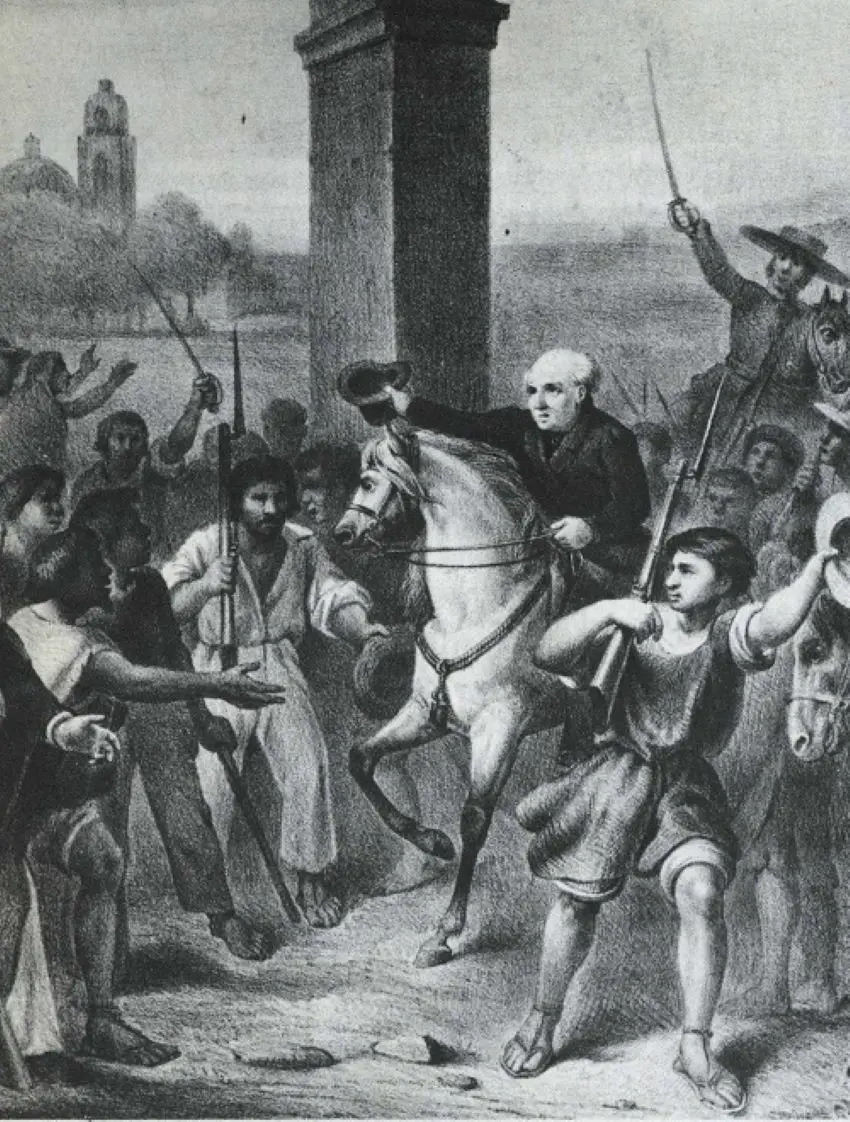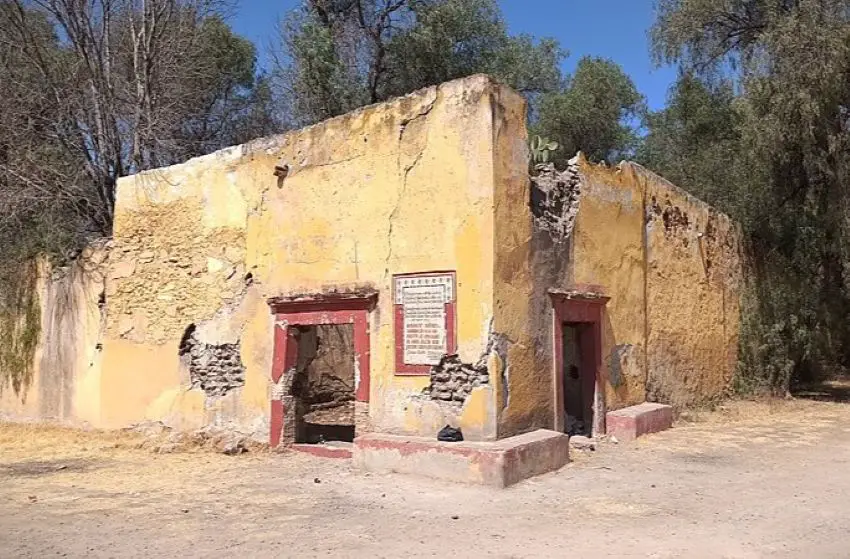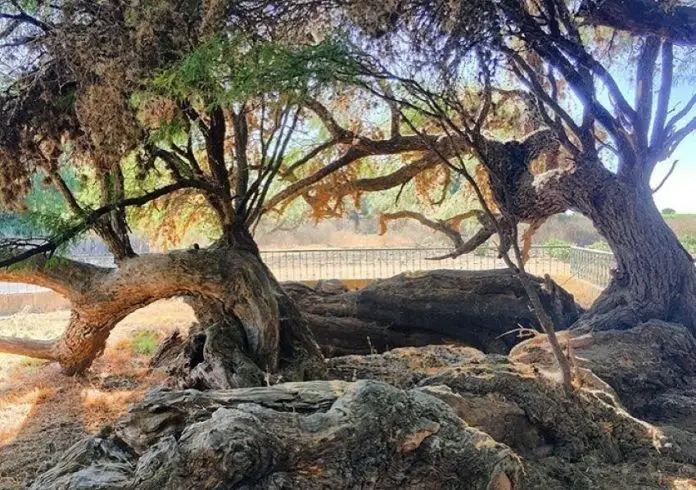Each year at 11 p.m. on September 15, the Grito de Dolores — the famous call to arms or “cry for independence” made by Father Miguel Hidalgo y Costilla in 1810 on the steps of the parish church in Dolores Hidalgo — is reenacted in cities and towns of all sizes throughout Mexico, followed in most cases by an impressive fireworks display and jubilant celebrations. The festivities continue throughout September 16, Independence Day, with parades featuring schoolchildren dressed as adorable revolutionaries and plenty of patriotic speeches, among other activities.
But one small community with a big claim to fame adds a particularly poignant commemoration to the mix. The community of la Erre, home to the once-powerful Hacienda de la Asunción de la Erre, lies four kilometers from that famous church in Dolores Hidalgo, and it was the first stop for Padre Hidalgo and his ragtag band of soldiers on their march to war.

The actual Grito de Dolores happened around 2:30 a.m. on September 16, 1810, when Hidalgo rang the church bells to call his congregation from their beds. With Ignacio Allende and Juan Aldama at his side, the priest urged his people to revolt. While Allende and Aldama then rode off to garner reinforcements, Hidalgo led a band of men to the Hacienda de la Erre, where they arrived around dawn. Allende and Aldama joined them there, and over a meal with the owners of the hacienda, Miguel, Luis and Manuel María Malo, they reflected on what they had just done and considered how best to move forward. They established the first cabildo, or leadership structure, for their fledgling revolutionary army. Moreover, Father Hidalgo said a mass for the assembled rebels—who represented a wide variety of social classes—under a mesquite tree at 11 a.m. that morning, providing a powerful religious imprimatur to the cause of justice and independence. So fortified, the fledgling fighters then marched on to Atotonilco and San Miguel de Allende.
A commemorative mass is now said every year on that exact spot, by the sacred mesquite tree. According to a plaque at the site, the mesquite has survived floods, fires, logging and even a lightning bolt that cracked it, causing many of its branches to lie at ground level, from which new branches have taken root. The tree is fenced off for protection, but at this year’s commemorative mass, no one complained when a young child climbed onto the inviting branches. As one bystander commented, “It is for her, our future, isn’t it, that we preserve the past?”
The Hacienda de la Erre was one of the oldest in Mexico founded by the sixth Mariscal de Castilla, Tristán de Luna y Arellano, soon after his arrival in México in 1535. Construction of the current buildings began in 1635.
At this year’s commemorative mass, subdelegada (local government representative) Erika Morales shared her passion for her community and its place in history. “My family has lived here for generations. I feel a profound connection to this earth and the powerful moment in history that occurred right here. Here, the values of independence, brotherhood, justice, and faith were put forth as the goals of our nation.”

The current condition of the hacienda makes the annual commemorative event all the more poignant. While the 389-year-old exterior walls of the enormous main house still stand, the interior is crumbling into ruin due to severe floods that have caused the foundation to sink by several meters. This and other difficulties such as Conagua expropriation, pillaging, and the economic challenges of maintaining such a property have resulted in it becoming unlivable.
“I feel such nostalgia for my childhood here in this beautiful place,” said Angelina Torres Aguilar, who co-owns the property with other family members. She grew up at the ex-hacienda when it was still a working cattle ranch with turkeys and over a hundred peacocks. The villagers would gather peacock feathers and take them into Dolores to sell. “We dream of one day being able to restore it to a condition worthy of its history.”
Her daughter, Laura Rodríguez Torres, shared more of that history: “The Ruta de la Plata, the main road of Camino Real Tierra Adentro, connecting mines, haciendas and towns from Guanajuato to Mexico City and Veracruz among many more cities, ran right through here, by the hacienda. All major trade routes, such as the Silk Road, bring together people from all over the world with different belief systems, spices, plants, and animals, and that’s exactly what happened here: there was a great mestizaje, a tumultuous mixing of the Spanish, the local Chichimecas, Otomís, free mulatos as well as indigenous cultures brought in from other parts of Mexico, too, plus quite a few Africans. At that time, this region was Nuevo España’s northern frontier. The diverse contributions of so many different cultures forged this country.”
She continued, “There has certainly been suffering in the course of that history. As the priest said in his sermon today, our society still must strive toward justice in order to create peace. We still have work to do — and remembering our history is an important part of it.”
Based in San Miguel de Allende, Ann Marie Jackson is a writer and NGO leader who previously worked for the U.S. Department of State. Her award-winning novel “The Broken Hummingbird,” which is set in San Miguel de Allende, came out in October 2023. Ann Marie can be reached through her website, annmariejacksonauthor.com.
